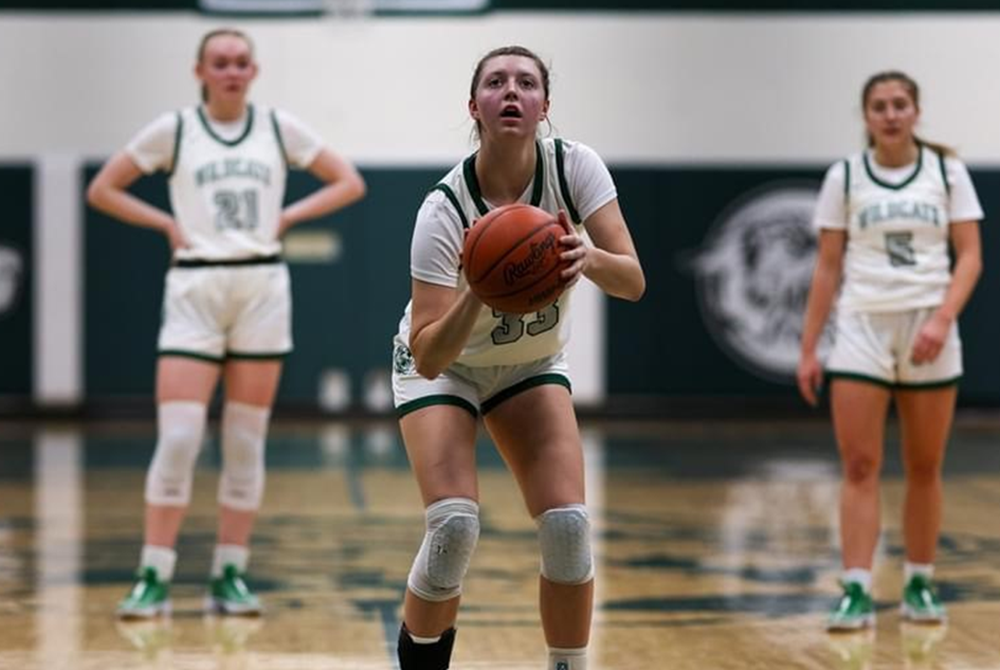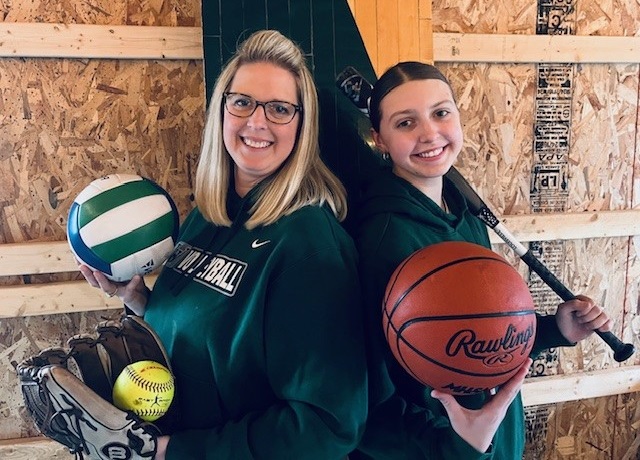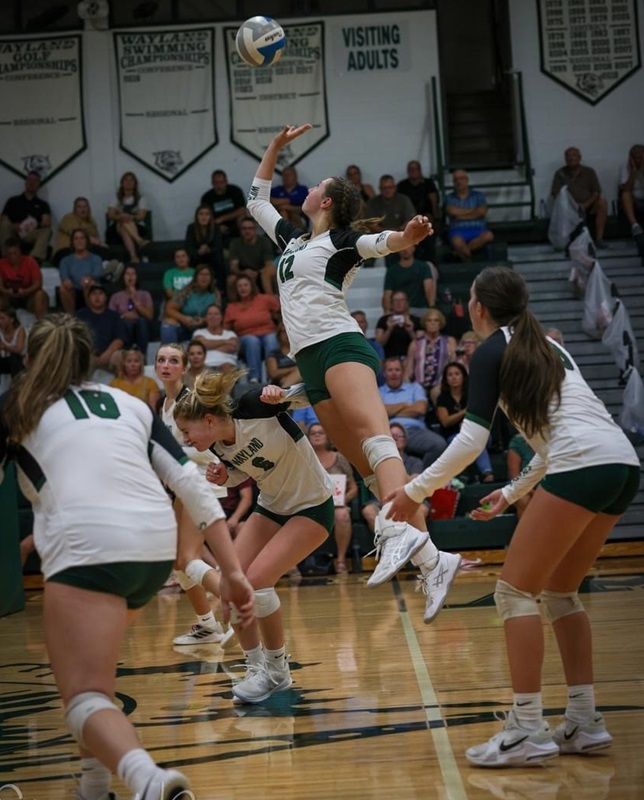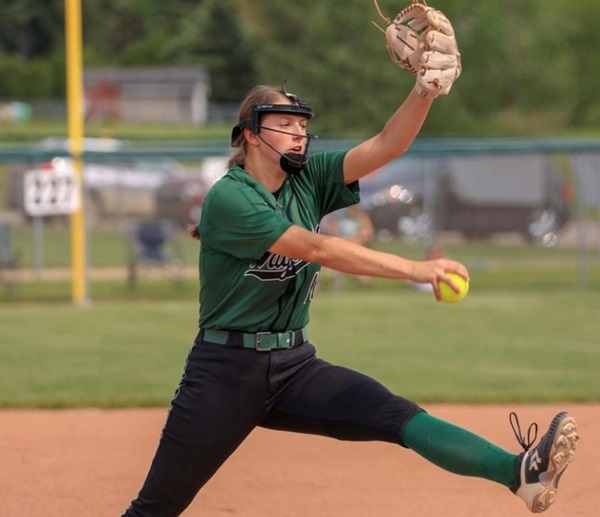
Data Dig Continues for Hoops Histories
March 7, 2017
By Ron Pesch
Special for Second Half
There is a list – well actually two – that sit, unfinished, among the “1,001 Projects I’d Like to Complete Before I Die.”
I became the caretaker of these lists back when I inherited the title “Historian for the MHSAA” in 1993.
The original lists contained the scores of all MHSAA Quarterfinal, Semifinal and Final round games for the MHSAA boys and girls basketball tournaments since their origin.
From the 1930s into the late 1960s, the MHSAA tournament game-day program was generally nothing more than a single sheet document, containing tournament brackets and team rosters for the qualifiers.
 In 1969, the program saw a redesign by Lansing sports personality Tim Staudt and premiered at the MHSAA Tournament. Sold for 50 cents, it included a list of “Past Michigan State Champions” containing the names of the winning teams and those schools’ basketball coaches for each of the four classes. The publication also included a couple of articles from Dick Kishpaugh, the author of the champions list. Kishpaugh was identified as “Sports Information Director at Kalamazoo College and … perhaps the most knowledgeable historian on Michigan high school basketball.”
In 1969, the program saw a redesign by Lansing sports personality Tim Staudt and premiered at the MHSAA Tournament. Sold for 50 cents, it included a list of “Past Michigan State Champions” containing the names of the winning teams and those schools’ basketball coaches for each of the four classes. The publication also included a couple of articles from Dick Kishpaugh, the author of the champions list. Kishpaugh was identified as “Sports Information Director at Kalamazoo College and … perhaps the most knowledgeable historian on Michigan high school basketball.”
With the start of the Girls Basketball Tournament in 1973, a similar program design was followed.
Those lists were faithfully updated and published in the game-day programs in the same format until the 1987-88 school year, when the souvenir publications were expanded. For the first time, a list containing opponents and final scores of the boys and girls championship games was now available to the general public.
Among the first tasks I chose to approach when I assumed the duties of MHSAA historian was to chase more information.
Since Kishpaugh’s lists had game scores for the three final rounds of the tournament, and names of the championship coaches, I thought I would try to leave my mark. I began chasing down the names of coaches for the runner-up, as well as final win-loss records for both schools. And while I was at it, I decided to see what I could find for teams that made the Quarterfinals and Semifinals.
Hundreds of hours have gone into adding to and maintaining the lists, and much progress has been made. Yet, some 20+ years later, I’m still trying to fill holes in the data.
The Basketball Coaches Association of Michigan helped spread the word, notifying its membership of the project. Web pages were created for both the boys and girls to show teams still missing information.
 The pursuit has led to friendships, and fascinating stories, documents and images. The late Walter Michael, who had attended the MHSAA Finals for more than 60 years, donated a cache of MHSAA tournament programs from the 1940s through the 1960s that filled in the names of many high school coaches. Del Newell, a sports writer from the Kalamazoo Gazette, knocked out most of the Kalamazoo schools early in my search. Bill Khan, then of the Flint Journal sports department, filled in a large number of missing names and records from the Flint area. The recently retired “Son of Swami,” better known as Mick McCabe, contributed by including the win-loss records of the quarterfinalists in his annual tournament prognostication columns for the Detroit Free Press.
The pursuit has led to friendships, and fascinating stories, documents and images. The late Walter Michael, who had attended the MHSAA Finals for more than 60 years, donated a cache of MHSAA tournament programs from the 1940s through the 1960s that filled in the names of many high school coaches. Del Newell, a sports writer from the Kalamazoo Gazette, knocked out most of the Kalamazoo schools early in my search. Bill Khan, then of the Flint Journal sports department, filled in a large number of missing names and records from the Flint area. The recently retired “Son of Swami,” better known as Mick McCabe, contributed by including the win-loss records of the quarterfinalists in his annual tournament prognostication columns for the Detroit Free Press.
Numerous coaches around the state sent e-mails and letters with the names and records for their predecessors. Prep basketball fans and former players sent along offerings. Rob Madsen from Mt. Pleasant became a huge contributor, and sent regular updates to both lists. He focused on some of the state’s smallest schools, including many from the Upper Peninsula.
Leon Westover sent the win-loss record for little Marlette, 1951 Class C runner-up, as well as one of my favorite photos from that golden era of prep sports. Marlette had “waltzed through the Mid-Thumb League and district, regional and quarter-final tournament games,” wrote Fred J. Vincent of the Port Huron Times-Herald. Marlette slipped past Stanton 41-37 to advance to the Class C title game against unbeaten Detroit St. Andrew.
“Just one game too many …,” continued Vincent, writing from East Lansing’s Jenison Field House following the title game. “That just about explains the one-sided beating Marlette absorbed in the state class C high school basketball final here Saturday afternoon. The final score was 52-26. … One of the smallest teams, physically, in the tournament, it seemed that the Raiders were just worn out.”
Yet, that night, the team was celebrated like the hometown heroes they really were.
 Westover’s photo shows the Red Raiders on the night of the Final, gathered at Teale’s Restaurant in Marlette. The clock indicates its 11:30. The owner, George Teale, has opened up his restaurant for the team to cook them steaks in honor of their achievement. Coach Nieland "Tommy" Thompson and his 22-2 squad look happy, ready to celebrate a long season.
Westover’s photo shows the Red Raiders on the night of the Final, gathered at Teale’s Restaurant in Marlette. The clock indicates its 11:30. The owner, George Teale, has opened up his restaurant for the team to cook them steaks in honor of their achievement. Coach Nieland "Tommy" Thompson and his 22-2 squad look happy, ready to celebrate a long season.
At tournament time, these lists help answer media requests that arise.
Question: When was the last time two undefeated teams met for an MHSAA Finals championship?
Answer: 2003-Class A for the girls. Detroit Martin Luther King topped Flint Northern 58-53. 1971-Class C for the boys. Shelby downed Stockbridge 71-57.
Question: What coach had the longest span between championship game appearances?
Answer: Eddie Powers, coach of Detroit Northern, went 34 years between his Class A championship team in 1930 and his runner-up squad in 1964. The mark is asterisked, however, as the Detroit Public School League chose to stop participation in the annual state tournament from 1931 through 1961. Saginaw’s Larry Laeding went 20 years between winning the 1942 Class A championship and his squad’s 1962 Class A title. Maple City Glen Lake coach Don Miller went 19 seasons between the school’s 1977 Class D title and its 1996 runner-up finish, also in Class D.
For the girls, both Mary Cicerone at Bloomfield Hills Marian and Carl Wayer at Ashley went 16 seasons between appearances. While Cicerone’s Marian teams have made seven visits to the Finals and have won six Class A titles, 16 years elapsed between Marian’s 1998 and 2014 Class A championships. Marian then captured a second consecutive title in 2015. Coach Wayer advance two teams to the title game. Ashley finished as runner-up in Class D in 1980 and again in Class D in 1996. The loss in 1996 came in overtime, and was the only defeat for Ashley that season.
Michigan’s high school basketball tournaments are an experience shared, mostly unchanged, since their beginnings. At the end of the regular season, everyone qualifies for the madness. Yet in the end, only four teams finish as champions. The path mimics the magical trail taken by fathers, grandfathers and great grandfathers, mothers and grandmothers. Qualifying for the Quarterfinals is still a huge triumph, as the round brings together only 32 teams from a field of more than 700 boys teams and more than 650 girls teams.
In my eyes, these lists emphasize that remarkable, undiluted achievement. In a world consumed with trophies and the number “1,” perhaps it is time to step back and celebrate this rare journey.
Click for Ron Pesch's data "Needs Lists" for girls basketball and boys basketball.
 Ron Pesch has taken an active role in researching the history of MHSAA events since 1985 and began writing for MHSAA Finals programs in 1986, adding additional features and "flashbacks" in 1992. He inherited the title of MHSAA historian from the late Dick Kishpaugh following the 1993-94 school year, and resides in Muskegon. Contact him at [email protected] with ideas for historical articles.
Ron Pesch has taken an active role in researching the history of MHSAA events since 1985 and began writing for MHSAA Finals programs in 1986, adding additional features and "flashbacks" in 1992. He inherited the title of MHSAA historian from the late Dick Kishpaugh following the 1993-94 school year, and resides in Muskegon. Contact him at [email protected] with ideas for historical articles.
PHOTOS: (Top) Marlette's 1951 boys basketball team gathers for dinner at a local restaurant after the Class C Final. (Middle top) The 1969 Boys Finals saw the addition of updated tournament programs. (Middle below) The 1977 Girls Finals program told of the teams that would meet at Jenison Field House. (Below) The 1947 Boys Finals program was among many that helped fill in data gaps from the early years of the tournament. (Photos provided by Ron Pesch.)

Laker Following Mother's Path as Wayland Multi-Sport Standout
By
Steve Vedder
Special for MHSAA.com
March 5, 2024
When Wayland junior Harmony Laker opted to embrace athletics many years ago, she never worried about following some pretty impressive footsteps nor matching the hefty accomplishments of someone very close to her, a mentor who had herself been a standout three-sport athlete in high school.
In fact, Laker has wound up starring in the same three sports in which her mother, 2000 Wayland grad Kara Potter, also excelled in high school – basketball, volleyball and softball.
Kara was all-conference in all three sports and earned all-state recognition in volleyball and basketball. Harmony has been all-league since her freshman season in the same three, and all-region in volleyball and basketball.
Just a chip off the old block? Maybe, says Harmony.
 But if there is anything mother and daughter have in common it's a love of sports.
But if there is anything mother and daughter have in common it's a love of sports.
"They introduced me to sports, and I've always strived to be like my parents," Harmony Laker said. "I was always drawn toward basketball, volleyball and softball. That's where my heart has always been, on a court or a field.
"I always wanted to play three sports; that's been my goal since middle school. Like my mother, I've always taken them seriously."
Like her mother, Laker hasn't just lettered in three sports – she's been outstanding. As a junior, she's already shattered the 1,000-point career basketball mark, reaching the milestone when she scored 38 points against Grand Rapids South Christian in late January. She's averaging 19 points, seven rebounds, four steals and three assists per game.
In volleyball, Laker had 864 kills, 513 digs, 80 blocks and 64 aces while serving 90 percent this season.
In softball, Laker has a 29-4 record as a pitcher over her first two seasons while batting .449 with six doubles and three homers as a sophomore. She's twice made all-conference in that sport, leading Wayland to two conference titles.
Kara Laker – also Wayland’s volleyball coach – said she and Harmony's father, Lance, a former varsity basketball coach at Middleville Thornapple Kellogg, never tried to edge their daughter toward athletics.
But when Harmony took up a variety of sports, the parents had one standing rule: Commit to the sport you're playing at the time. Worry about the other sports when it's time.
 "Sports has always been a big part of our lives," Kara said. "We've never pushed our kids, but we've told them if you're going to be successful, you have to put in the time. My parents wanted us to do what we could (in sports). It was always in our prayers that our kids would truly love all sports. We're a competitive family, and we've always been drawn to sports."
"Sports has always been a big part of our lives," Kara said. "We've never pushed our kids, but we've told them if you're going to be successful, you have to put in the time. My parents wanted us to do what we could (in sports). It was always in our prayers that our kids would truly love all sports. We're a competitive family, and we've always been drawn to sports."
The Laker family navigates a busy sports schedule. Liberty Laker plays volleyball at Grace Christian University, eighth grader Charity plays the same three sports as her mother and sister, and third grader Christian plays football, baseball and basketball.
"We divide and conquer," Kara said of her and her husband following the robust schedules of four children.
Harmony's first memories of sports involve supplying water to her father's basketball players. From there, she progressed to copying the three sports in which her mother excelled.
Kara won Wayland's coveted Multer Award as the school's top multi-sport athlete. Harmony hasn't won the award yet, but seems a shoo-in before she graduates in 2025.
Kara said it's tougher for athletes now to play three sports as AAU and travel sports often collide with high school athletics. But in terms of playing three, she said that decision has always been left to the kids.
"It's harder these days, but we were three-sport athletes who wanted to be good in all three," said Kara, who admits she's had discussions with Harmony about narrowing her participation list.
"It's actually a discussion we're having at this moment," she said. "A lot of it comes down to coaches and having them all work together so Harmony can play."
 In order of preference, Harmony lists her favorite sports as basketball, volleyball and softball. But when it comes to cutting out a sport, Harmony hedges. If she plays all three as a senior – and that's currently the plan – she'll leave Wayland with 12 varsity letters, a rarity in today's high school sports world.
In order of preference, Harmony lists her favorite sports as basketball, volleyball and softball. But when it comes to cutting out a sport, Harmony hedges. If she plays all three as a senior – and that's currently the plan – she'll leave Wayland with 12 varsity letters, a rarity in today's high school sports world.
Harmony said the advice offered by her parents is the same that trickled down from their parents (her grandparents). Play as many sports as you choose, but also be well-rounded off the courts and fields.
Harmony is a member of the National Honor Society, leads the Wayland chapter of the Fellowship of Christian Athletes, is a member of the student council and has gone on numerous mission trips through her church.
But when it comes to athletics, Harmony is quick to revert to what she was taught early.
"I just want to work at my craft. You're only as good as the time you put in," she said. "My mom and dad have always said it's the heart that makes sports great. There are so many moments which are trials in sports and games, but ultimately that is what's going to make you better.
"Playing with pressure is a privilege. If a game is close and you have to execute, that's a privilege. God has put you out there for a reason, and you take the moments as they come."
PHOTOS (Top) Wayland’s Harmony Laker lines up for a free throw while playing her favorite sport, basketball. (2) Harmony, right, is successfully following in the multi-sport footsteps of her mother, Kara Laker. (3) Harmony Laker (12) soars to get a hand on a ball during volleyball season. (4) Laker makes her move toward the plate as a pitcher during the spring. (Action photos by Shannon N Jessica Photography.) mother/daughter photo courtesy of the Laker family.)

